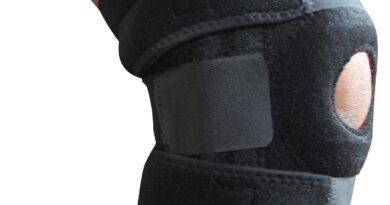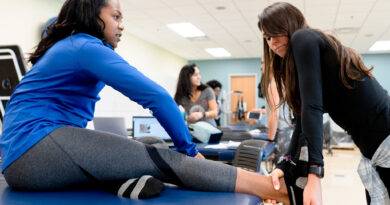Return to Sports Following Total Knee Arthroplasty
When is it OK to return to tennis following a total knee arthroplasty, a.k.a. knee replacement? I get asked this question all the time. The answer is not that simple, and it depends much more on range of motion and functional strength than it does just time from surgery.
This question came up the other day with a 65 year old tennis player, 6 months out from surgery. He had been attempting to play the last two weeks, but with swelling and soreness following the match. This is a very competitive guy so I know he is giving it his all. He had done some PT initially, 3 weeks at home and another 3 weeks in an outpatient clinic. He completed therapy feeling that he was doing fine. He was also under the impression he was doing well by his therapist and physician who gave him the green light at 6 months.
Problem was this guy still was lacking a few degrees of knee extension, couldn’t squat without shifting the weight to his non-surgical leg, and had obvious hip abductor and external rotation strength deficits when standing on one leg (complicated way of saying his balance wasn’t the best). This was just from the first five minutes of the exam.
Here are some general recommendations for range of motion and strength when attempting to return to sports following knee arthroplasty:
- Must have full knee extension/hyperextension. Basically, the surgical leg must go as straight as the non-surgical leg for normal gait and running mechanics. Quad strength and control at this end range must be excellent as well.
- The patient/athlete should be able to perform a body weight squat to parallel with perfect technique. This means even weight distribution right to left, heels stay down, knees stay apart, back stays straight. Cue the patient “keep your weight on your outer heels” during the squat. This can instantly clear up the valgus collapse (knock knees) that we so often see.
- The patient/athlete must be able to perform a forward lunge to kneeling and back up maintaining an upright trunk.
- Should be able to perform a lateral lunge to 3/4 depth. Ankle, knee, hip, and shoulder should be lined up vertically at that point.
- Single leg squat/step down off a 10 inch box with excellent eccentric control x10. Eccentric basically means to lower slow and controlled
- Single leg balance 30 seconds, pelvis level, pelvis and shoulder facing forward. This is a tough one to check on yourself if you are not trained. This is obviously looking at balance but also hip stability which is crucial when running, jumping, and changing direction. Watch the belt line, it should stay level when you go to one leg. Your body should not turn away from the stance leg either. If either of these things happen then hip stability is an issue and you will have issues with the knee down the road whether you participate in sports or not.
So there is my check list from 10 years of working in orthopedics and sports medicine as well as developing athletes of all ages. Does everyone achieve all six? No. The closer the better obviously as most will eventually attempt to resume their once normal activities. I do want each and every one of them to understand the risk they take with their new knee if they do not continue to work toward achieving these goals. Each one of them is critical to proper running and jumping mechanics, decelerating and cutting, and protecting the knee from the pounding, twisting, and beating that are all a part of athletics.



